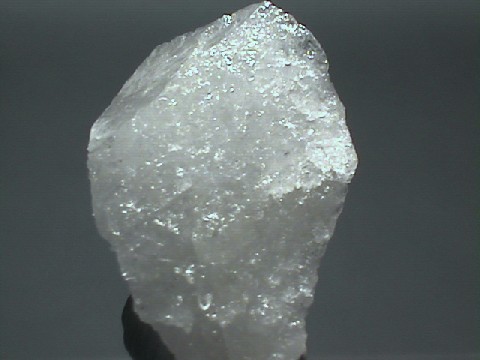 THE MINERAL CHKALOVITE
THE MINERAL CHKALOVITE
- Chemistry: Na2BeSi2O6, Sodium Beryllium Silicate.
- Class: Silicates
- Subclass: Inosilicates
- Uses: As mineral specimens and rarely as a gemstone.
Specimens
Chkalovite is found in agpaitic pegmatites, a type of igneous rock that is rich in sodium and poor in silicon and aluminum compared to other typical igneous rocks.
Many new and exotic minerals are discovered wherever this rock type is found.
The agpaitic pegmatites of the
Kola Peninsula, Russia;
Chkalovite is typically colorless or white and crystals are complex and not always so well formed. As a result, it is often hard to find and recognize. Despite these difficulties some specimens are finding their way onto the mineral markets. Often associated with other rare minerals, chkalovite can make an interesting specimen.
PHYSICAL CHARACTERISTICS:
- Color is colorless and white.
- Luster is vitreous to greasy.
- Transparency: Crystals are transparent to translucent.
- Crystal System is orthorhombic; m m 2.
- Crystal Habits include mostly equant (often complex) to prismatic forms.
- Cleavage indistinct in one direction.
- Fracture is uneven to conchoidal.
- Hardness is 6.
- Specific Gravity is 2.7
- Streak is white.
- Associated Minerals are numerous and include many exotic species:
Schizolite , murmanite, aegirine,natrophosphate ,kalifersite ,djerfisherite ,vitusite-(Ce) , albite,lomonosovite ,lueshite , serandite,nefedovite ,fluorcaphite ,lovozerite ,ussingite ,steenstrupine-(Ce) ,mangan-neptunite , eudialyte, sphalerite and villiaumite. - Notable Occurrences include the type locality; the eastern slope of Malyi Punkaruaiv Mountain in the Lovozero Massif of the
Kola Peninsula, Russia as well as
Langesundfjord , Norway; Ilimaussaq, Greenland and Mont Saint-Hilaire, Quebec, Canada. - Best Field Indicators include crystal habit, color, associations, locality and hardness.



